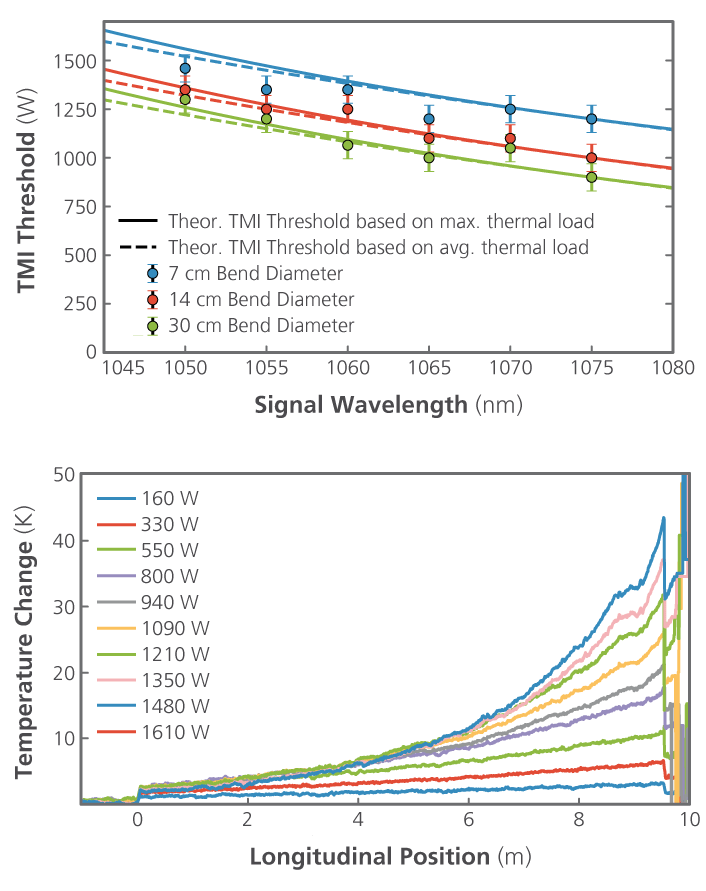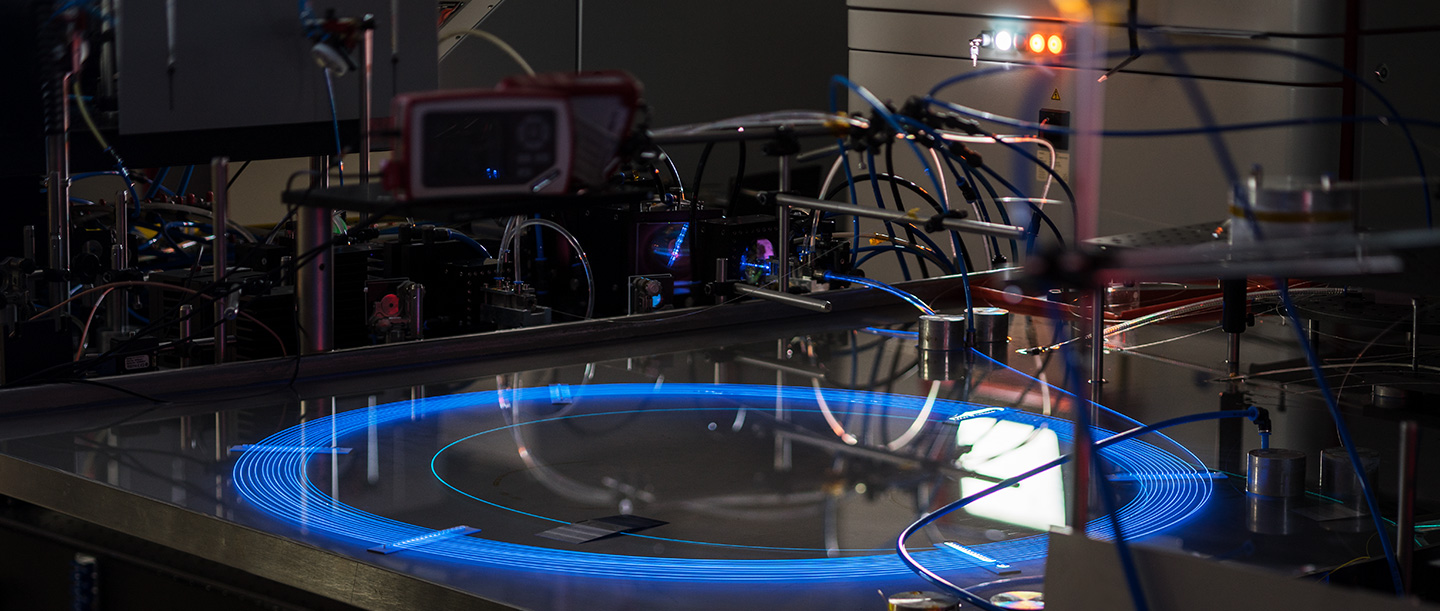Measuring Thermal Load in Presence of Transversal Mode Instabilities

Transversal mode instabilities (TMI) in fiber amplifiers are a significant obstacle of further output power scaling. If the output power exceeds a system-dependent threshold, the beam profile fluctuates over time and consequently the beam quality is reduced. Above the threshold, precise processing of workpieces becomes unfeasible. The origin of the beam dynamics was identified as thermal effects in the fiber core. The thermal load in the core medium leads to heating of the fiber and the surrounding material. In order to achieve a better understanding of the physical processes and to increase the current limits of power scaling, characterization of the temperature distribution in the fiber core plays an important role.
Based on the so-called frequency domain reflectometry, a new in-situ measurement system was developed to measure this temperature distribution during high-power operation. The measurement setup can be integrated into the fiber amplifier without significantly influencing its properties. If the ambient conditions are known, the quantity of the thermal load in the fiber core can be determined from the measured temperature values. The longitudinal resolution reaches the order of magnitude of a few millimeters. Using a simulation of the laser process, the measured total thermal load can be analyzed and the significant quantities involved can be assigned to quantum defect, photodarkening, and background absorption. The TMI threshold is determined not only by the fiber properties, but also by the bend diameter of the fiber and the signal wavelength.
The TMI threshold of an ytterbium-doped fiber was investigated as a function of these two variables. With constant fiber bending diameter, the wavelength-dependent TMI threshold could be predicted and increased by 25 % based on the previously determined thermal load. In addition, it has been demonstrated that photodarkening in the case of the investigated fiber has only a negligible impact on the thermal load.
The quantitative information on the thermal load and the dependence of the TMI-threshold is also important for the development and production of future high power fibers. In the future, the heat distribution in different fibers and under various operating conditions will be investigated and compared experimentally for the first time.
Authors: Franz Beier, Marco Plötner, Bettina Sattler, Fabian Stutzki, Till Walbaum, Andreas Liem, Nicoletta Haarlammert, Thomas Schreiber
